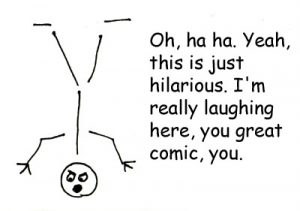
Whether you’re a writer, professional editor, or client for a professional editor, you can always benefit from a little self-editing. However, reviewing your own work is one of the most difficult things you can do. We’re all too close to our own work; we know what we meant to say, and this can get scrambled up with what is actually on the page.
Most of us have seen the e-mail forward that provides a paragraph of seemingly unrecognizable letters that somehow magically resolves itself into readable text, simply because the first and last letters of each word are in the correct places. If not, check it out:
Aoccdrnig to a rscheearch at Cmabrigde Uinervtisy, it deosn’t mttaer in waht oredr the ltteers in a wrod are, the olny iprmoatnt tihng is taht the frist and lsat ltteers be at the rghit pclae. The rset can be a toatl mses and you can sitll raed it wouthit porbelm. Tihs is bcuseae the huamn mnid deos not raed ervey lteter by istlef, but the wrod as a wlohe.
Get a free sample proofread and edit for your document.
Two professional proofreaders will proofread and edit your document.
That principle holds true for reading something we’ve written, revised, or edited; instead of reading precisely what we wrote, we remember what we meant. And in doing so, we can miss critical errors.
But that doesn’t mean self-editing is hopeless. There is a variety of useful, easy tricks for checking your own work. If you’re a writer, try using one or more of these before you submit your work to a service like Proofreading Pal for editing. If you’re an editor, hide the “tracked changes” that you’ve added to the document and read the work again using one or more of these techniques. You may be amazed at what can slip by even the most attentive first read.
Read Aloud
Our brains process words differently when we speak from when we read silently. That means that we can use a very simple trick to force ourselves to read what’s actually on the page instead of what could or should be there: reading aloud. Of course, this works best with documents of only a few pages or when we have a long time to finish a self-editing session, as most people read faster than they can speak clearly. Still, it offers a good opportunity to come at the work in a fresh way and to ensure that everything flows well.
By reading aloud, you can often uncover instances where your writing doesn’t make sense the way you intended; the words and your thoughts don’t match up. Typos, grammatical errors, and other issues are all stress when reading aloud.
To enhance this, try imagining someone intimidating as your audience. It could be a teacher or parent, but that’s often not fun. Try imagining someone you find attractive or a potential boss for a great job you want to get. Think about how this person would listen carefully to see if you make a mistake.
You can also cast yourself in a role, Hillary Clinton with the press listening or Jean-Luc Picard on the deck of the Enterprise with the crew waiting to hear what they all need to blow up next. The more self-conscious you are, the more you will listen to yourself and the more you will spot those errors.
Read Backwards
 Reading backwards is another way to force your brain to examine the words differently. Again, this works best for short pieces, but you can also use it to self-edit selected parts of a text by picking a few paragraphs to read backwards.
Reading backwards is another way to force your brain to examine the words differently. Again, this works best for short pieces, but you can also use it to self-edit selected parts of a text by picking a few paragraphs to read backwards.
For spelling and homonym errors, start at the end of a paragraph and read each word as it comes, from right to left instead of from left to right. Try it with this paragraph:
Every furry otter loves to play in the water. Sometimes they squeak and splash; sometimes they glide silently below the surface. No matter what, otters always enjoy puddles.
Reading backwards, you would get:
Puddles enjoy always otters, what matter no. Surface the below silently glide they sometimes; splash and squeak they sometimes. Water the in play to loves otter furry every.
Makes no sense, right? But because you’re reading individual words, not sentences that convey meaning, you can more easily see when you’ve misspelled something or swapped it out for the wrong sound-alike word.
For picking up on meaning, grammar, and structure, read the sentences in the correct order, but with the last sentence of the paragraph first. The point is to break out of anticipating what the words will say so you can better see what they actually say.
Next time: two more tips (including that oh-so-handy find-and-replace)!
Kate S.
Get a free sample proofread and edit for your document.
Two professional proofreaders will proofread and edit your document.
Get a free sample proofread and edit for your document.
Two professional proofreaders will proofread and edit your document.
We will get your free sample back in three to six hours!